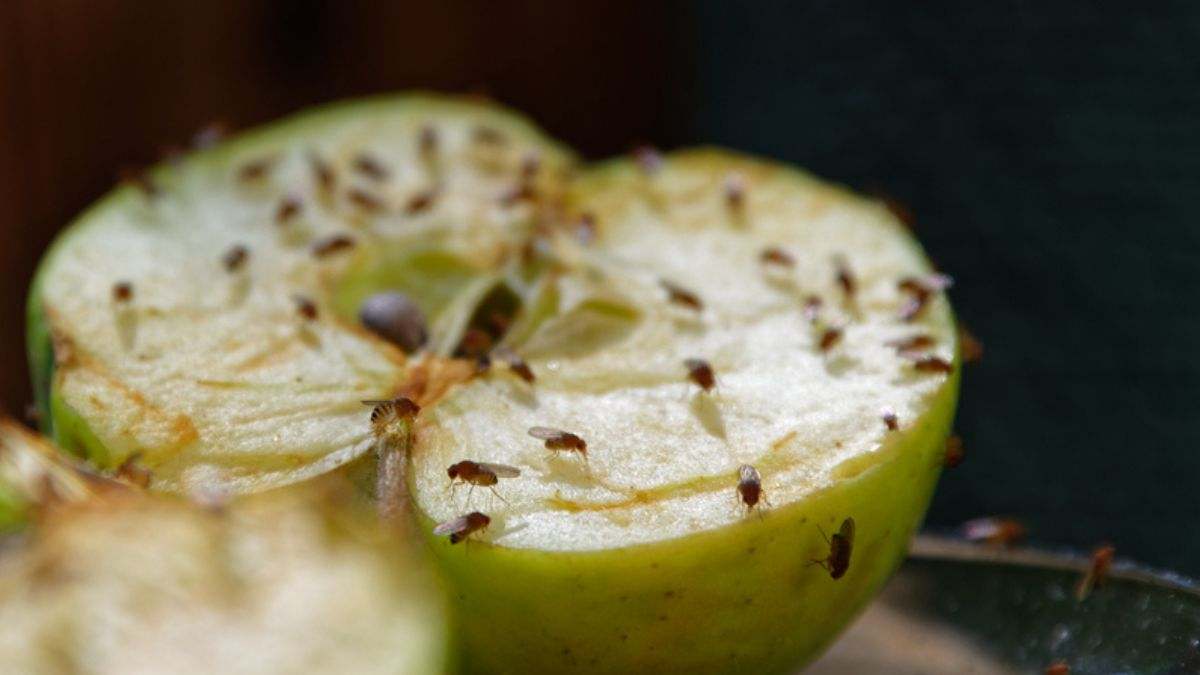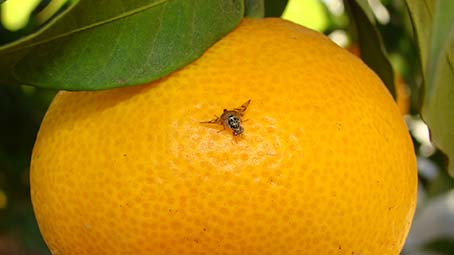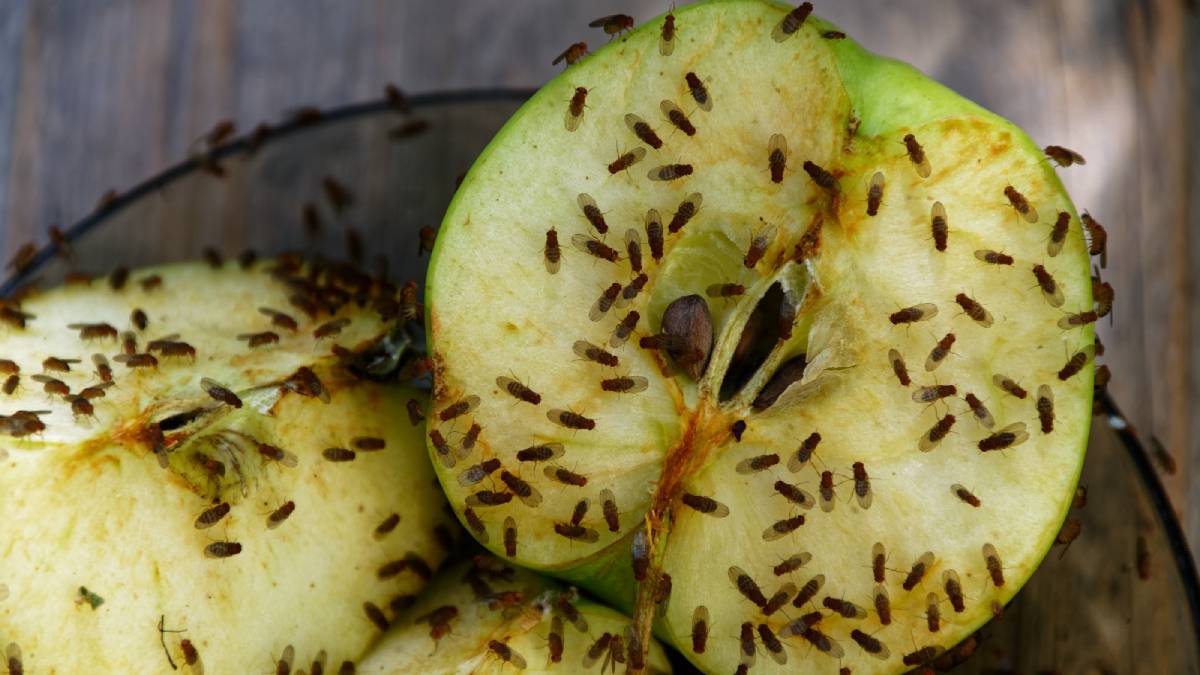
Fruit flies
WHAT IT IS AND HOW TO ELIMINATE
Plantas decorativas de jardín y/o interior
Fruit flies
Drosophila melanogaster / Ceratitis capitata
Pathogen:
Insect
Type:
Risk to the plant:
CRITICAL
Moscas de la fruta

WHO CAUSES IT?
Drosophila melanogaster and Ceratitis capitata are two species of diptera that, although different in their biological and ecological characteristics, share a relevant role as agricultural pests. Drosophila melanogaster, also known as the vinegar fly, has rapid development and reproduces in fermenting organic matter, while Ceratitis capitata, known as the Mediterranean fly, has a more aggressive behavior towards healthy fruits and is one of the most devastating pests in fruit trees in temperate and tropical climates. Both species go through a complete transformation with egg, larva, pupa and adult phases. Adult females lay their eggs in fruits at different degrees of maturity. The larvae emerge and feed on plant tissue, causing internal damage that promotes decomposition. After larval development, they abandon the fruit to pupate in the soil. The adults emerge after several days, depending on the temperature, and restart the process. Its reproductive capacity is very high, especially under favorable temperature and humidity conditions, which contributes to its rapid expansion and establishment in new agricultural habitats.
SYMPTOMS
Infestation by Drosophila melanogaster and Ceratitis capitata in plants generates damage that directly affects fruit production. These flies, when ovipositing on the fruits, introduce microorganisms that accelerate the fermentation and rotting process. The larvae that hatch from the laid eggs feed on the pulp, weakening the tissues and causing the internal collapse of the fruit. Affected fruits lose commercial value and may fall prematurely. On a visual level, the symptoms may go unnoticed in the initial phases, but they quickly evolve to more obvious forms.
- Soft or sunken spots on the surface of the fruit
- Presence of white larvae inside the fruit
- Changes in the color of the fruit towards dark or abnormal tones
- Smell of fermentation or vinegar
- Irregular or accelerated maturation
- Premature fruit drop
- Perforated areas or areas with visible entry points


DEVELOPMENT CONDITIONS
Temperature:
18 °C – 30 °C
Humidity:
60 % – 80 %
HOW IS IT SPREAD?
Transport of infested fruits, Direct contact with infected fruits, Wind, Contaminated tools, Contaminated plant material
HOW TO ELIMINATE IT?
Home treatments
Natural allies
There are no natural allies
Chemical treatments
RECOMMENDED PRODUCTS TO ELIMINATE THE PEST
PLANTAS REPELENTES
Basil, Wormwood (Artemisia), Calendula
RECOMMENDATIONS
- Collect fallen or damaged fruits and dispose of them away from the crop.
- Use homemade traps with vinegar or commercial ones to capture adult flies.
- Harvest the fruits as soon as they are ripe, do not leave them on the plant.
- Cover the fruits with protective bags if you have few trees or plants.
- Keep the growing area clean, free of fruit remains or weeds.
- If the problem is big, you can use natural insecticides like spinosad or chemicals like deltamethrin.
- Do not leave cut fruit outdoors, as it attracts flies.















